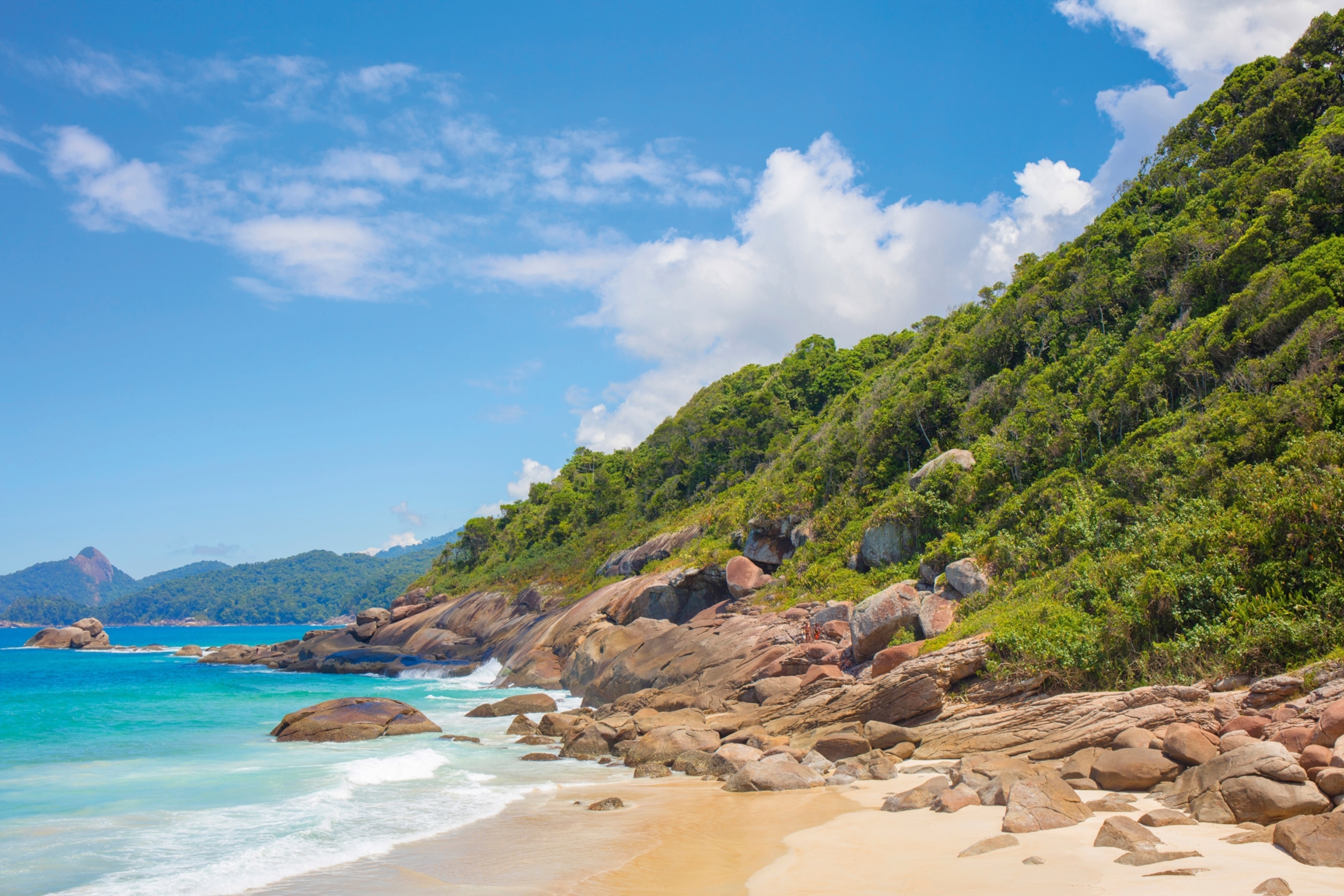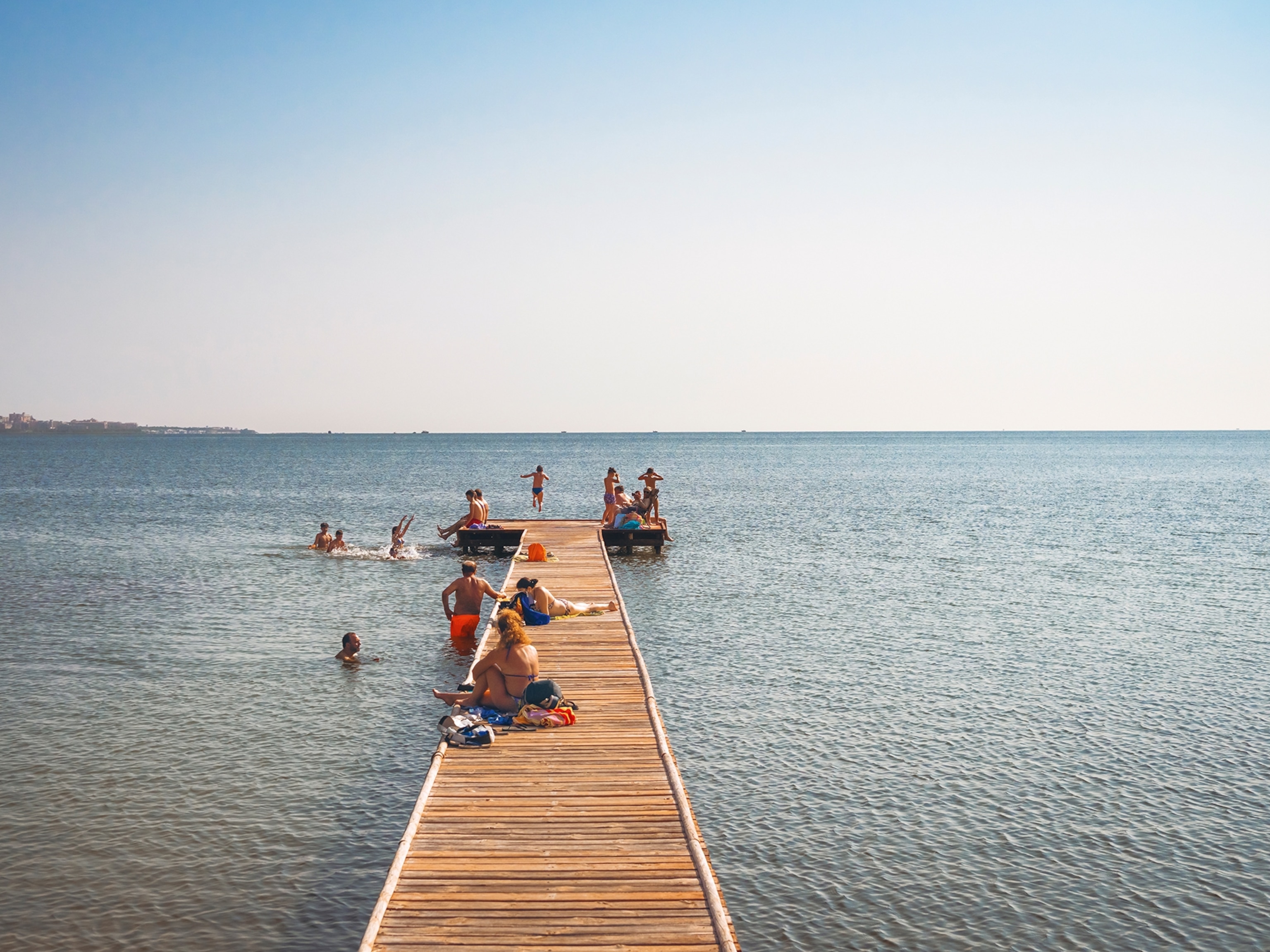Islands, emerald mountains and the open road—a perfect week on Brazil's Costa Verde
The Green Coast is arguably one of Brazil’s best road trips, linking Rio to São Paulo via pristine sands and jungle trails.

Between Rio de Janeiro and São Paulo lies the Costa Verde, or Green Coast, a ribbon of wild Atlantic rainforest, time-forgotten beaches and historic towns whose Portuguese-era architecture ranks among the prettiest in Brazil. The Costa Verde is the great, green lung of the country’s southeastern coast, and the drive itself is varied — at times snaking inland between mist-hugged mountains, at others breaking through the trees to reveal quiet bays with fishing boats. This is how to spend six days exploring its highlights.
Day 1: Mangaratiba
A cluster of colourful houses leading down to Praia do Saco — an arc of golden sand hemmed in by emerald mountains — the quiet coastal town of Mangaratiba is just one-and-a-half-hour’s drive west of central Rio but feels a world away. Before you get there, you’ll drive around a headland fringed with even more beaches — Praia Brava, Praia de Apara and Praia de Santo Antônio. Once you get to town, check out local institution Quiosque do Luiz, a kiosk on the beach serving seafood feasts such as bobó de camarão (shrimp stew with manioc and coconut milk) and ostra ao bafo (steamed oysters with cachaça and lemon).
Don’t miss: The ruins of Praia do Saco, what remains of the Portuguese colonial settlement.
Day 2: Ilha Grande
An hour’s drive west of Mangaratiba lies Angra dos Reis, a sweeping bay that’s home to 365 islands. By far the biggest and best known of these is Ilha Grande, a forested idyll home to howler monkeys and hummingbirds. A day trip here is a popular option, with the ferry from Angra dos Reis port taking 30 minutes.
On the island is Lopes Mendes, a huge arc of forest-backed sand often listed as among Brazil’s most beautiful beaches. To reach it, take a 40-minute schooner shuttle from Ilha Grande’s main port, Vila do Abraão, to Praia do Pouso, from where it’s a 20-minute walk away. Alternatively, hike the trails around Vila do Abraão, looking out for marmosets in the trees.
Don’t miss: Snorkelling at the sheltered lagoon of Lagoa Azul.
(10 must-do experiences in Brazil.)
Day 3: Serra da Bocaina
A short distance west of Angra dos Reis lies the eastern edge of Serra da Bocaina National Park, a mountainous wilderness smothered in Atlantic Forest. This is a place for hiking, watching spider monkeys and swimming beneath the waterfalls — such as the Cachoeira Chapéu do Sol ou Joelão — that line the tributaries of the Mambucaba River. The waterway runs through the forest to the town of Mambucaba, your spot for a seafood dinner in one of the beach bars. The area is the home of cachaça, Brazil’s national spirit and the active ingredient in the caipirinha cocktail.
Don’t miss: Cachoeira de Melancia, a beautiful jungle waterfall.

Day 4: Paraty
The crown jewel of the Costa Verde is Paraty, a gorgeous town of low-slung Portuguese buildings halfway between Rio and São Paulo. It’s worth taking a day to explore the attractive churches here — Paraty Matriz, Santa Rita, Rosario and Das Dores — and to sample local cachaça and moqueca (fish stew) in restaurants and bars. There are also several galleries in town, some exhibiting photographs of Paraty’s cobbled streets flooded with seawater, planks laid out for pedestrians to walk on. This inconvenience — an unintended result of tiny holes drilled in the seawall to relieve tidal pressure — nonetheless means the streets get a thorough clean every month, particularly during the full moon.
Don’t miss: The view of Paraty and its bay from Forte Defensor Perpétuo, a museum set in a former fort surrounded by landscaped grounds.
Day 5: Ubatuba
As you cross the border into São Paulo state, take the time to stop at Ubatuba, considered the watersports capital of the Costa Verde. Itamambuca Beach is a famed surf destination due its reliable waves, while standup paddleboarding is a fun option for non-surfers. Calmer Félix Beach, meanwhile, is a gorgeous place to do nothing other than sip on a coconut. Efforts are also being made in Ubatuba to protect the marine environment — check out the Tamar Project, which works to rehabilitate injured and rescued turtles.
Don’t miss: Farol do Cruzeiro lighthouse, a photogenic sunset spot.
Day 6: Ilhabela
The final swathe of wilderness, before the skyscrapers of São Paulo loom into view, lies offshore on the island of Ilhabela. Park up in São Sebastião, a 90-minute drive from Ubatuba, and board the 15-minute ferry to the island. Here, the tiled rooftops of Ilhabela city give way to mountains covered in Atlantic forest. Hike to Cachoeira da Toca, a waterfall with a swimming hole and adjacent cachaça distillery, and take a 4WD tour to Praia De Castelhanos, a beach on the island’s east coast.
Don’t miss: The remote sands of Praia do Jabaquara, bookended by river pools.
(This Brazilian savannah could soon be offering jaguar tours to rival the Pantanal.)
To subscribe to National Geographic Traveller (UK) magazine click here. (Available in select countries only).





